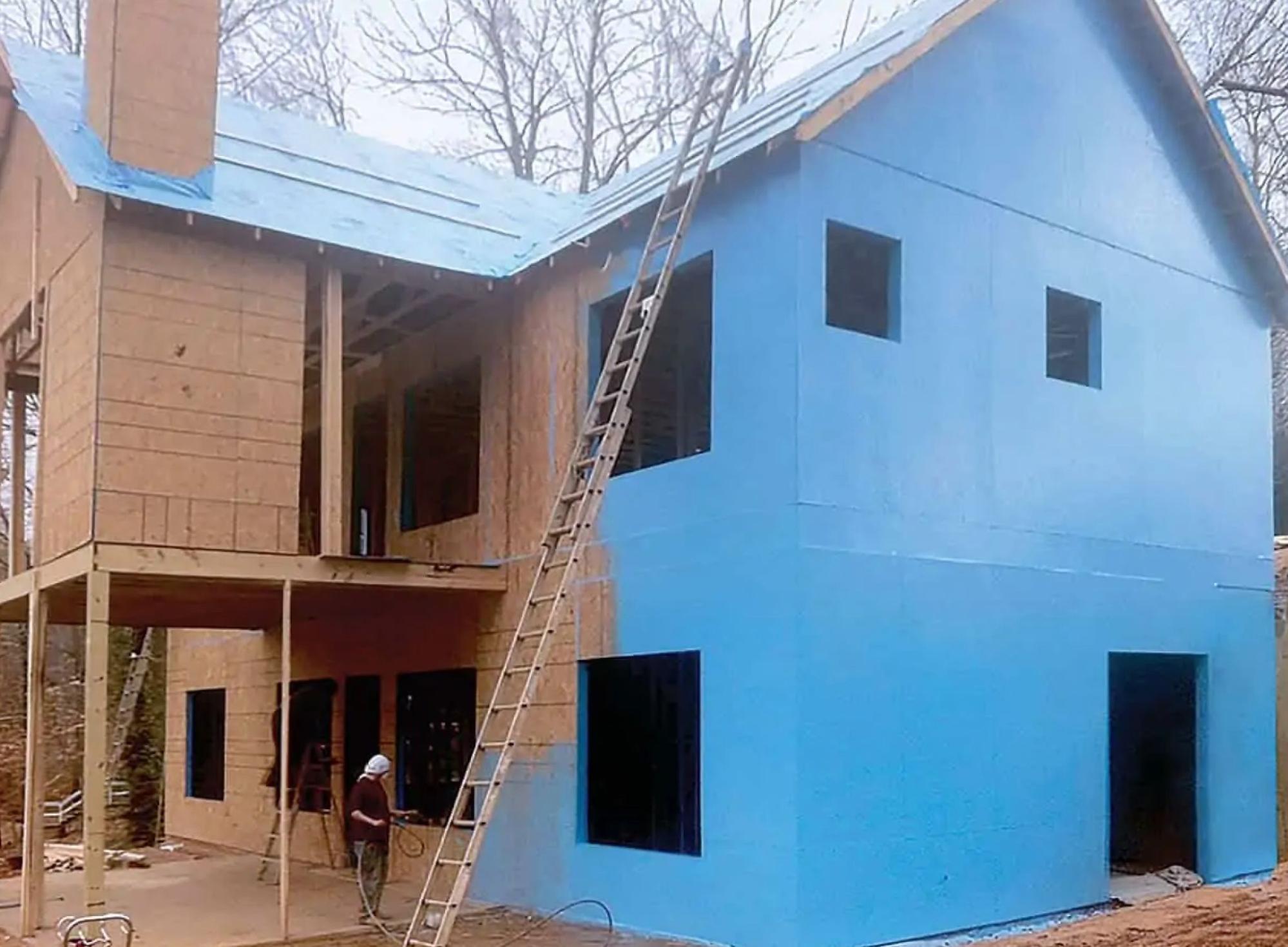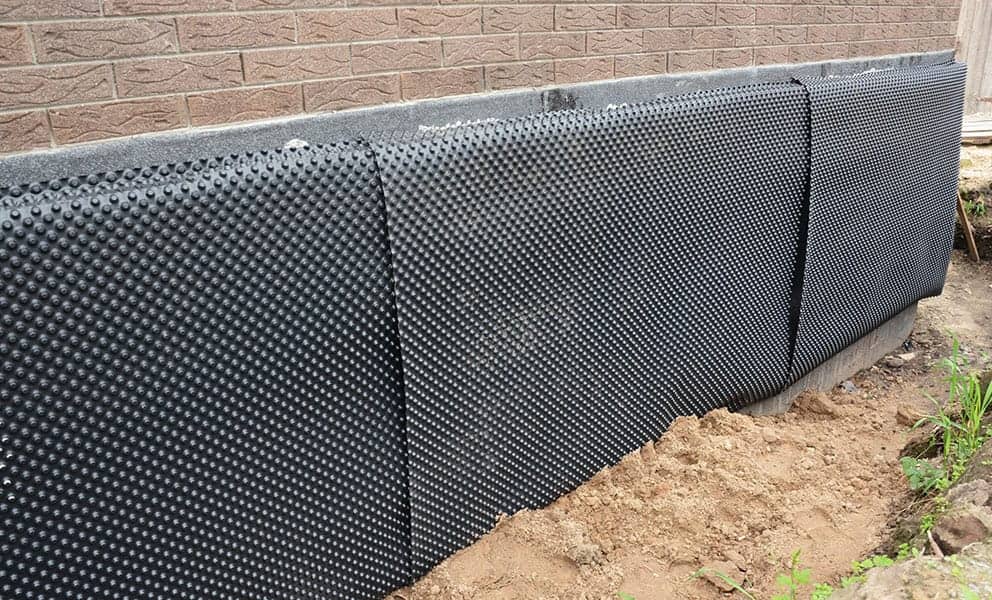Top instruments damp specialist newcastle uses during inspection
Understanding the Importance of Damp Proofing in Preventing Structural Damages
Moist proofing acts as a necessary defense versus dampness seepage in structures. This protective procedure can avoid considerable structural damage, yet lots of homeowner continue to be unaware of its value. Acknowledging the signs of wetness and understanding the different solutions readily available can be important. Disregarding wet proofing can lead to serious repercussions. What are the specific threats and remedies that residential or commercial property owners should think about?
What Is Damp Proofing and Exactly How Does It Work?
Moist proofing offers as a vital barrier against moisture invasion in structures. damp specialist newcastle. This procedure involves using specific materials and strategies to avoid water from passing through walls, floors, and various other structural elements. Typically, damp proofing can be achieved via the installation of moist evidence membranes, coverings, or making use of specialized sealants.These methods function by creating a protective layer that prevents wetness motion, making certain that the indoor setting stays healthy and dry. Wet proofing is especially important in locations prone to high humidity or groundwater, as it helps preserve the stability of the framework over time.Moreover, effective wet proofing contributes to power performance by avoiding warmth loss related to damp atmospheres. By dealing with potential wetness concerns before they escalate, damp proofing works as a proactive action in protecting structures from the detrimental impacts of water damages, ultimately prolonging their lifespan and keeping their value
Common Indicators of Moisture in a Building
Dampness issues within a building can show up with several obvious indicators that suggest the existence of dampness. One popular indicator is the appearance of water spots on ceilings or wall surfaces, which commonly shows moisture seepage. In addition, gurgling or peeling paint can recommend that excess moisture is entraped underneath the surface area, bring about wear and tear. Another typical indicator is the existence of mold and mold, which thrive in wet problems and can frequently be recognized by their stuffy odor. Moreover, an increase in moisture degrees can create condensation on home windows and other surfaces, highlighting dampness problems. Lastly, warped or uneven floor covering may signify underlying moisture that compromises structural honesty. Acknowledging these indicators early can aid reduce possible damages and keep a secure living atmosphere. Regular examinations and punctual action are essential in addressing wetness problems before they escalate.
The Risks of Neglecting Damp Proofing
Neglecting damp proofing can result in significant hazards to a structure's structural integrity, as moisture accumulation may damage walls and foundations. Furthermore, long term dampness develops a setting conducive to mold and mildew growth, presenting major health and wellness risks to owners. Attending to these threats is essential for ensuring both security and long life of the property.
Architectural Honesty Threats
When property owners overlook the importance of effective moist proofing, they expose their residential or commercial properties to significant architectural integrity dangers. Extended moisture seepage can lead to the growth of mold and mildew, which damages foundational aspects and can jeopardize general stability. Furthermore, excess wetness can erode concrete and brickwork, leading to fractures and structural failures. Timber components are particularly susceptible; they can rot and shed load-bearing capability, positioning significant dangers to the structure's structure. Moreover, neglected moist conditions might attract bugs, such as termites, which further intensify architectural wear and tear. Eventually, disregarding wet proofing steps can lead to costly repairs and prospective safety and security dangers, underscoring the important function of aggressive wet management in maintaining the honesty of homes.
Health And Wellness Danger Issues
How can a relatively small oversight result in severe wellness threats? Ignoring wet proofing can develop an environment conducive to mold development, which presents considerable health and wellness risks. Mold spores can set off allergies, respiratory system problems, and other health and wellness issues, particularly in vulnerable populaces such as youngsters, the senior, and people with pre-existing problems. Furthermore, persistent wetness can bring in pests like rodents and bugs, which lug illness that further endanger health and wellness. The visibility of wetness likewise adds to a decline in indoor air quality, intensifying asthma and other breathing disorders. As a result, the failing to deal with wet issues not just intimidates architectural stability but likewise threatens the health of passengers, highlighting the critical need for efficient moist proofing steps.
Different Kinds Of Damp Proofing Solutions
Although various elements can add to damp issues in buildings, choosing the ideal damp proofing option is essential for maintaining structural integrity. A number of choices are offered, each customized to specific conditions.One usual solution is a damp-proof membrane (DPM), generally constructed from polyethylene or asphalt, which is mounted in floorings and wall surfaces to stop moisture access. One more choice is damp-proof courses (DPC), which are layers of water resistant material put within wall surfaces to obstruct climbing damp.Chemical damp proofing includes injecting waterproofing chemicals right into wall surfaces to develop an obstacle versus dampness. In addition, exterior treatments such as tanking, which involves applying a water resistant layer to the beyond foundations, can be effective in stopping water penetration.Each solution has its advantages and is chosen based on the structure's details concerns, ecological conditions, and long-term maintenance factors to consider, making sure optimal security against damp-related damage.

The Expense of Damp Damages vs. Prevention
Recognizing the economic implications of damp damage contrasted to avoidance highlights the significance of aggressive actions. The prices related to moist damage can be significant, including repair services to structural elements, mold removal, and potential health-related expenses. House owners might deal with substantial monetary stress if substantial damages occurs, resulting in enhanced insurance premiums and lost home value.In comparison, purchasing wet proofing solutions is typically far a lot more affordable. First expenditures for avoidance methods, such as installing damp-proof membrane layers or boosting drain systems, are commonly surpassed by the long-term financial savings from preventing expensive fixings. In addition, stopping damp problems can boost a property's overall worth and charm, making it a smart financial investment. When assessing the price of moist damages versus prevention, it becomes clear that taking aggressive steps can guard financial interests and keep the stability of the property over time.
Choosing the Right Damp Proofing Approach for Your Home
Which moist proofing approach is most appropriate for a certain property often depends on different factors, consisting of the structure's age, existing wetness concerns, and neighborhood ecological problems. For older structures, standard approaches such as bitumen membrane layers or cementitious coatings may be extra effective, as they can give a durable barrier versus climbing wet. On the other hand, more recent buildings may take advantage of modern services like injected damp-proof training courses, which are much less invasive and can be tailored to details moisture challenges.Additionally, properties in locations with high water tables or hefty rains may require advanced techniques, such as cavity wall water drainage systems or external waterproofing. House owners must likewise think about the particular products utilized in their building's building, as some techniques might not be compatible. Ultimately, a detailed analysis by a professional can direct home proprietors in selecting the most effective wet proofing approach customized to their special scenarios.
Maintaining Your Damp Proofing System In Time
Regular upkeep of a damp proofing system is vital for guaranteeing its lasting effectiveness and safeguarding a building from moisture-related damages. Homeowner ought to carry out regular inspections to recognize any type of signs of wear or concession in the wet proofing layer. This includes monitoring for cracks, peeling off paint, or mold and mildew growth, which may suggest moisture intrusion.Additionally, it is recommended to clean rain gutters and downspouts consistently to prevent water buildup around the foundation. Reapplying membrane layers or sealants may be essential if deterioration is observed.Engaging expert services website for routine analyses can even more boost the longevity of the system. These professionals can offer insights right into possible vulnerabilities and recommend prompt repairs.
Regularly Asked Questions
The Length Of Time Does Damp Proofing Treatment Last Prior To Requiring Repair Services?
The durability of moist proofing therapy normally ranges from 10 to 30 years, relying on factors such as the method utilized, ecological conditions, and maintenance methods. Normal evaluations can aid figure out when fixings might be required.
Is DIY Damp Proofing Effective Compared to Specialist Providers?
The effectiveness of DIY moist proofing varies considerably. mould treatment newcastle. While some individuals may accomplish acceptable outcomes, specialist solutions typically ensure complete remedies, leveraging competence and high quality products to avoid future concerns extra dependably than the majority of do it yourself attempts
Can Damp Proofing Improve Indoor Air High Quality?
The concern of whether wet proofing can enhance indoor air quality emerges regularly. Reliable damp proofing lowers wetness degrees, consequently reducing mold and mildew growth and allergens, ultimately contributing to a much healthier indoor atmosphere for owners.
Exist Details Regulations for Damp Proofing in Various Locations?
Rules for wet proofing differ by area, often affected by regional building ordinance and environmental problems. Conformity assurances effective moisture control, promoting and protecting frameworks safety and security, which highlights the necessity for adherence to these details policies.

What Are the Long-Term Conveniences of Proper Damp Proofing?
The long-term benefits of correct wet proofing include boosted structural integrity, minimized maintenance costs, boosted interior air high quality, and increased residential property worth. These advantages add to a much healthier living atmosphere and extended lifespan of structures. Typically, moist proofing can be attained through the installation of damp evidence membranes, finishes, or the use of specialized sealants.These approaches work by producing a safety layer that inhibits dampness motion, guaranteeing that the interior environment stays dry and healthy. Wet proofing is particularly essential in locations vulnerable to high humidity or groundwater, as it assists keep the integrity of the framework over time.Moreover, effective wet proofing adds to power effectiveness by avoiding warmth loss connected with wet atmospheres. Disregarding damp proofing can lead to substantial dangers to a building's structural honesty, as moisture build-up may damage walls and structures (damp proofing newcastle). Various aspects can contribute to damp problems in structures, picking the proper wet proofing option is vital for maintaining architectural stability. Which moist proofing method is most suitable for a certain home typically depends on numerous elements, including the structure's age, existing dampness issues, and local environmental conditions